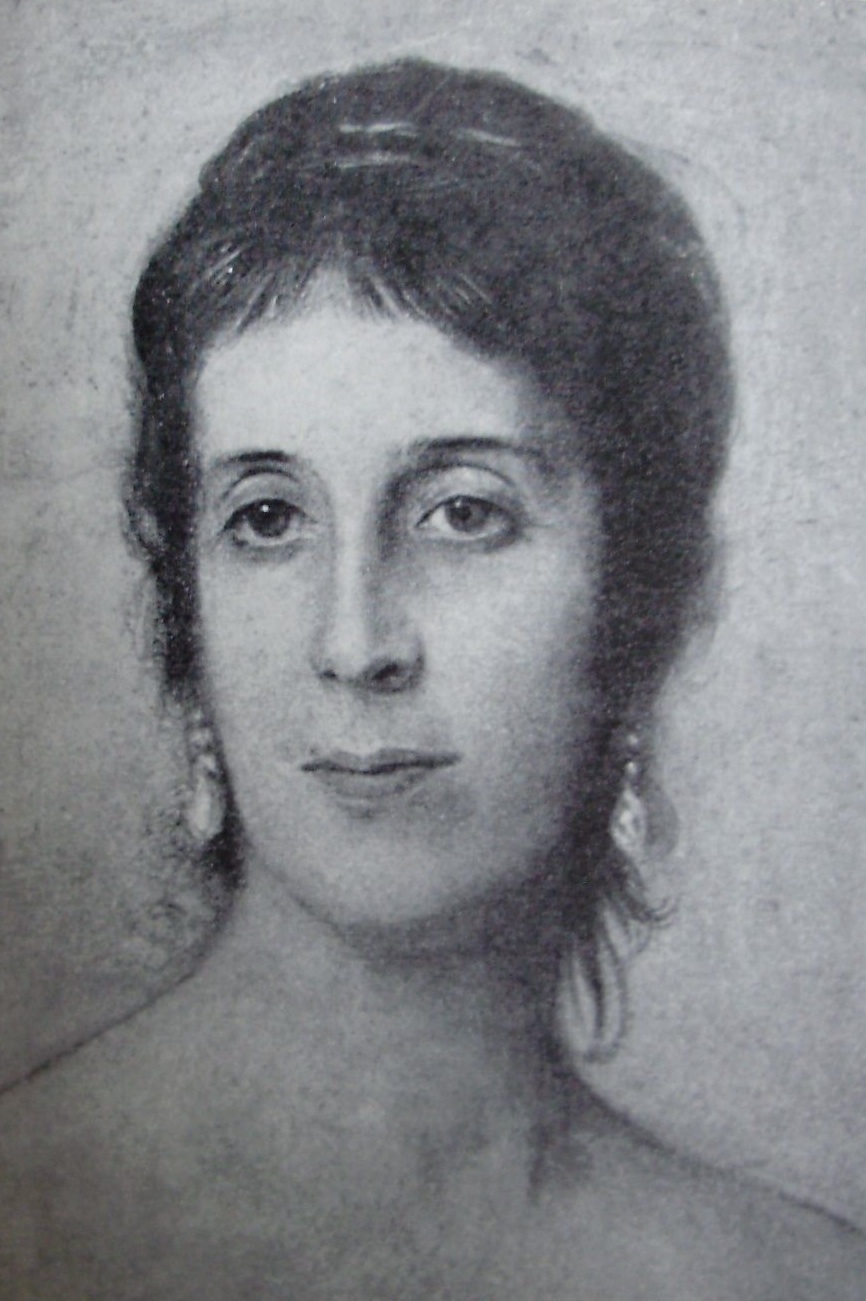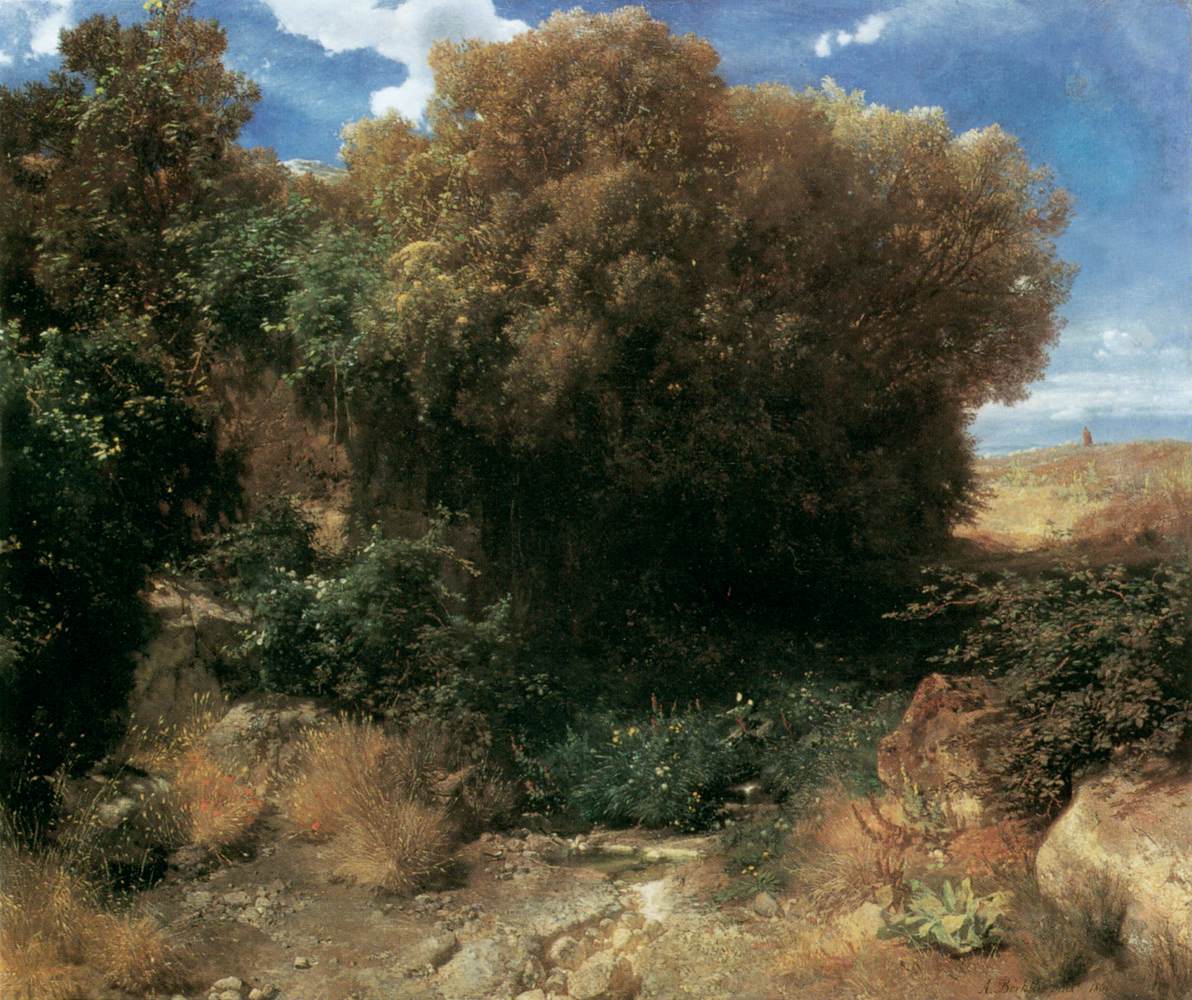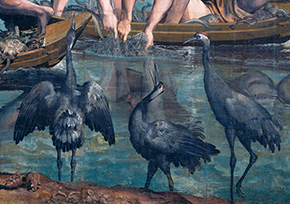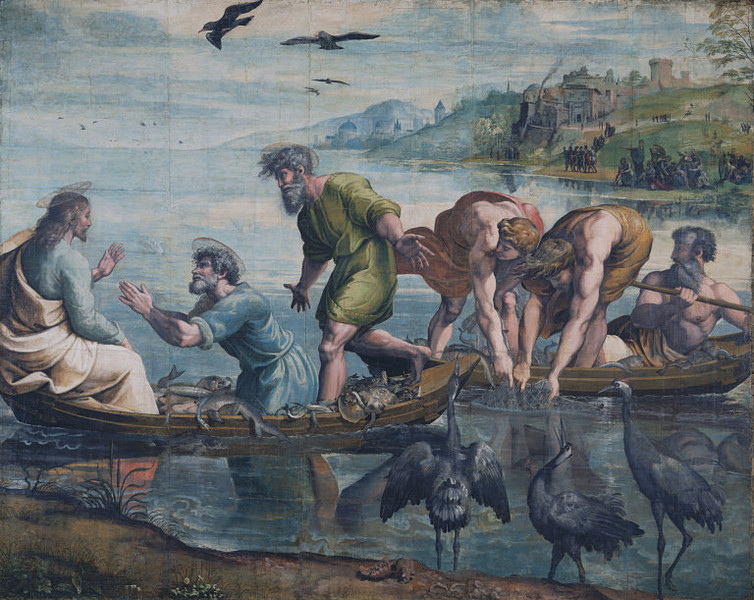M
I
C
R
O
S
T
O
R
Y
O
F
A
R
T
........................................................

NOW COMPLETED:

........................................................
MICROSTORY OF ART
ONLINE JOURNAL FOR ART, CONNOISSEURSHIP
AND CULTURAL JOURNALISM
........................................................
INDEX | PINBOARD | MICROSTORIES |
FEATURES | SPECIAL EDITIONS |
HISTORY AND THEORY OF ATTRIBUTION |
ETHNOGRAPHY OF CONNOISSEURSHIP |
SEARCH

........................................................



 >MICROSTORIES
>MICROSTORIES
- Richard Serra
- Martin Scorsese
- Claude Simon
- Sunshine
- Werner Herzog
- The Creation
- Marcel Duchamp
- Nino Rota
- Wölfflin and Woolf
- Hansjörg Schneider
- Kraftort Arkadien
- Visual Biography
- Schlaraffenleben
- Die Geisteswissenschaften
- The Voyeur
- Buzzword Sustainability
- Paul Verlaine
- Tao Yuanming
- New Beginning
- Seneca
- Still Lifes
- Charles Baudelaire
- Frédéric Chopin
- The Art History of Sustainability
- Wang Wei
- Solarpunk
- Historians of Light
- Lepanto
- Renaturalization
- Plates
- Snow in Provence
- Learning to See
- Picasso Dictionaries
- Peach Blossom Spring
- Picasso Tourism
- Tipping Points
- Sviatoslav Richter
- Weather Reports
- Treasure Hunt
- Another Snowscape in Picasso
- Picasso in 2023
- Dragon Veins
- The Gloomy Day
- The Art of the Pentimento
- Reforestation
- The Status of Painting
- Emergency Supply
- Punctuality
- Watching Traffic
- Zhong Kui
- How Painting Survived the 1990s
- Confirmation Bias
- Sustainability and Luxury
- Garage Bands
- Picasso and Artificial Intelligence
- Eyes of Tomorrow
- Picasso in 2023 2
- Gluing Oneself to Something
- Suburbia
- Bamboo
- Sustainability and Carpe Diem 1
- Interviews with Bruegel
- Sustainability and Carpe Diem 2
- Coffee & Sugar
- Bamboo 2
- Picasso in 2023 3
- Sustainability and Carpe Diem 3
- Cherry Orchard
- Old Magazines
- Chance
- Nick Drake
- Harlequin
- The Smartphone & the Art Book
- Atlas Syndrome
- The Kitchen
- Atlas Syndrome 2
- Consideration
- Tori Amos
- School
- Orchard Auctioning Day
- The Hundred Years’ War
- Sócrates
- Chameleon
- Nefertiti Bust
- Picasso as a Computer
- Sunflowers
- Philemon & Baucis
- Ode to the Radio
- Childhood
- Wimmelbild
- Restitution
- Nick Drake 2
- Wishful Thinking
- Sundays
- The Independent Scholar
- September
- The Fisherman by Pirosmani
- Microadventure
- Sociology
- Salvator Mundi
- Chillon
- Appassionata
- Amber
- Homer
- Berlin
- Planet Walk
- Improvisation
- Seeing Picasso
- These Nice Kids
- Robber
- The One
- The Sea Turtle
- Zoo
- Through the Hush
- Wunderkammer
- I Do Not Seek, I Find
- Shopping Mall
- Food Hamper
- The Secretary
- This Gate
- Nor Rainy Day
- House on a Hill
- Beautiful Island
- Second-hand Bookstore
- Flat
- Slap in the Face
- Serra, Wenkenpark
- Apologies
- The Bells
- Nordmann Fir
- Picasso Wanting To Be Poor
- Picasso, Pirosmani
- A Brief History of Sculpture
- 24 Sunsets
- Rusty Phoenix
- Glove
- Wintry Stanza
- A Song
- Like A Beatle
- Catching An Orange
- Solar Bees
- Permaculture

 >FEATURES
>FEATURES
- Van Gogh On Connoisseurship
- Two Museum’s Men
- Ende Pintrix and the City in Flames
- Titian, Leonardo and the Blue Hour
- The Man with the Golden Helmet: a documentation
- Un Jury d’admission à l’expertise
- Learning to See in Hitler’s Munich
- Leonardo da Vinci and Switzerland
- The Blue Hour Continued
- The Blue Hour in Louis Malle
- Kafka in the Blue Hour
- Blue Matisse
- Blue Hours of Hamburg and LA
- A Brief History of the Cranberry
- The Other Liberale in the House
- The Blue Hour in Raphael
- Who Did Invent the Blue Hour?
- Monet on Sustainability
- Velázquez and Sustainability
- The Blue Hour in Guillaume Apollinaire
- Van Gogh on Sustainability
- The Blue Hour in Marcel Proust
- Picasso and Sustainability
- The Contemporary Blue Hour
- The Blue Hour in 1492
- The Blue Hour in Hopper and Rothko
- Hopper and Sustainability
- The Blue Hour in Ecotopia
- The Hour Blue in Joan Mitchell
- Explaining the Twilight
- The Twilight of Thaw
- The Blue Hour in Pierre Bonnard
- Explaining the Twilight 2
- Picasso on Stalin
- Rubens on Sustainability
- The Salvator Mundi in Bruegel and Rubens
- The Blue Hour in Leonardo da Vinci and Poussin
- The Blue Hour in Rimbaud
- Faking the Dawn
- Frost and Thaw in Ilya Ehrenburg
- Picasso, Stalin, Beria
- Picasso, Solzhenitsyn and the Gulag
- Shostakovich on Picasso
- Hélène Parmelin in 1956
- Historians of Picasso Blue
- Picasso Travelling to Moscow 1
- The Blue Hour in Caravaggio
- Picasso Travelling to Moscow 2
- Picasso, the Knife Game and the Unsettling in Art
- Some Notes on Leonardo da Vinci and Slavery
- Picasso Moving to the Swiss Goldcoast
- The Blue Hour in Camus
- The Blue Hour in Symbolism and Surrealism
- Caspar David Friedrich in His Element
- Exhibiting the Northern Light
- Caspar David Friedrich in His Element 2
- Robert Schumann and the History of the Nocturne
- The Blue Hour in Robert Schumann
- Caspar David Friedrich and Sustainability
- The Twilight of Thaw 2
- Multicultural Twilight
- The Blue Hour in Anton Chekhov
- The Blue Hour in Medieval Art
- Twilight Photography
- The Blue Hour in Bob Dylan
- Iconography of Optimism

 >SPECIAL EDITIONS
>SPECIAL EDITIONS
- Visions of Cosmopolis
- Mona Lisa Landscapes
- Turner and Ruskin at Rheinfelden
- Painters On TV & On TV
- Spazzacamini in Art
- A Last Glance at Le Jardin de Daubigny
- The Experimental Cicerone
- A Dictionary of Imaginary Art Historical Works
- Iconography of Blogging
- Begegnung auf dem Münsterplatz
- Cecom
- Das Projekt Visual Apprenticeship
- Those Who See More
- A Fox on Seeing with the Heart
- Sammlung Werner Weisbach
- Daubigny Revisited
- Some Salvator Mundi Microstories
- Some Salvator Mundi Afterthougths
- Some Salvator Mundi Variations
- Some Salvator Mundi Revisions
- A Salvator Mundi Questionnaire
- A Salvator Mundi Puzzle
- Unknown Melzi
- Francis I and the Crown of Charlemagne
- From Amboise to Fontainebleau
- Drones Above Chambord
- Looking Back At Conques
- Flaubert At Fontainebleau
- Images of Imperial Ideology
- The Chronicles of Santa Maria delle Grazie
- Seeing Right Through Someone
- Melzi the Secretary
- Eying Glass
- A Foil to the Mona Lisa
- A Renaissance of the Cartoon
- Sketching a Family Tree
- Venetian Variations
- A Brief History of Digital Restoring
- A Consortium of Painters
- Leonardeschi and Landscape
- A Christ in Profile
- Learning to See in Spanish Milan
- A History of Gestures
- Leonardo and Josquin
- A Renaissance of the Hybrid
- Suida and Heydenreich
- The Watershed
- Three Veils
- From Beginning to End
- Connoisseurship of AI
- Twilight and Enlightenment
- The Blue Hour in Chinese Painting
- Dusk and Dawn at La Californie
- Iconography of Sustainability
- The Blue Hour in Goethe and Stendhal
- The Sky in Verlaine
- The Blue Hour in Paul Klee
- Iconography of Sustainability 2
- The Blue Hour in Charles Baudelaire
- From Bruegel to Solarpunk
- Some Salvator Mundi Documentaries
- Some More Salvator Mundi Monkey Business
- The Windsor Sleeve
- Brigitte Bardot’s Encounter with Picasso
- Art Historians and Historians
- A Salvator Mundi Chronicle
- The Salvator Mundi and the French Revolution
- The Fontainebleau Group
- The Encounter of Harry Truman with Pablo Picasso
- The Fontainebleau Group Continued
- The Windsor Sleeve Continued
- The Salvator Mundi in Early Netherlandish Painting 1
- Some Salvator Mundi Resources
- A New Salvator Mundi Questionnaire
- The Woman in Picasso
- The Yarborough Group
- Melzi, Figino and the Mona Lisa
- The Yarborough Group Continued
- A Salvator Mundi Global History
- The Salvator Mundi in Medieval Art
- The Salvator Mundi in Medieval Art 2
- The Salvator Mundi in Early Netherlandish Painting 2


 >HISTORY AND THEORY OF ATTRIBUTION
>HISTORY AND THEORY OF ATTRIBUTION
- The Mysterious »Donna Laura Minghetti-Leonardo«
- Assorted Demons of Connoisseurship
- Panofsky Meets Morelli
- Discovering the Eye of Sherlock Holmes
- Handling the Left-handed Hatchings Argument
- Visual History of Connoisseurship
- Alexander Perrig
- Connoisseurship in 2666
- What Postmodernity Has Done to Connoisseurship
- Dividing Four Fab Hands
- A Leonardesque Ambassador
- Test Cases in Connoisseurship
- A Raphael Expertise
- How to Tell Titian from Giorgione
- Louise Richter
- The Unique Property in the History of Connoisseurship
- An Expertise by Berenson
- The Book of Expertises
- An Album of Expertises
- An Expertise by Friedländer
- A Salvator Mundi Provenance
- How to Tell Leonardo from Luini
- An Expertise by Crowe and Cavalcaselle
- An Expertise by Bayersdorfer
- An Expertise by Hermann Voss
- An Expertise by Hofstede de Groot
- Leonardeschi Gold Rush
- An Unknown »Vermeer«
- An Expertise by Roberto Longhi
- An Expertise by Federico Zeri
- A Salvator Mundi Geography
- A Salvator Mundi Atlas
- The Bias of Superficiality
- 32 Ways of Looking at a Puzzle
- James Cahill versus Zhang Daqian
- Five Fallacies in Attribution
- On Why Art History Cannot Be Outsourced to Art Dealers
- On Why Artificial Intelligence Has No Place in Connoisseurship
- Salvator Mundi Scholarship in 2016
- Leonardo da Vinci at the Courts
- The Story of the Lost Axe
- The Last Bruegel
- A Titian Questionnaire
- On Where and Why the Salvator Mundi Authentication Did Fail
- The Problem of Deattribution

 >ETHNOGRAPHY OF CONNOISSEURSHIP
>ETHNOGRAPHY OF CONNOISSEURSHIP
MICROSTORY OF ART
ONLINE JOURNAL FOR ART, CONNOISSEURSHIP
AND CULTURAL JOURNALISM
........................................................

***
ARCHIVE AND FURTHER PROJECTS

1) PRINT


***
2) E-PRODUCTIONS


........................................................

........................................................

........................................................
FORTHCOMING:


***
3) VARIA

........................................................

........................................................

........................................................

........................................................

........................................................
***
THE GIOVANNI MORELLI MONOGRAPH

- The Giovanni Morelli Monograph
........................................................
MICROSTORY OF ART
ONLINE JOURNAL FOR ART, CONNOISSEURSHIP AND CULTURAL JOURNALISM
HOME
Donna Laura Minghetti
Microstory of Art VIII –
Donna Laura Minghetti

»Even the cranes, above the Campagna Romana, are flying in another way«, Donna Laura Minghetti (1829-1915), the ›greatest of great ladies‹ (Ethel Smyth), is being quoted. By German writer and director of the Vienna Burgtheater Adolf von Wilbrandt (http://de.wikipedia.org/wiki/Adolf_von_Wilbrandt). And from a bird’s perspective we are going to discover a landscape full of birds and other flying objects, wherein, here and there a painter, or a group of painters, might be spotted. And here and there a member of the Roman high society.

According to severe a critic as the German writer Rudolf Borchardt (http://de.wikipedia.org/wiki/Rudolf_Borchardt) the Italian landscape, by 1908, had to be seen as a country not yet discovered by painters. Borchardt, however, made two concessions. Possibly feeling that he was insulting a great number of painters all at once, he mildened his judgment: at least next to the Deutsches Mittelgebirge (http://de.wikipedia.org/wiki/Mittelgebirge#Die_deutschen_Mittelgebirge), Scotland, Holland, Sweden, the Normandy. And he did conceed to Arnold Böcklin (compare the picture above) of having given at least »some hints«.

Johann Christian Reinhart, View of the Tiber at the Spring of Acqua Acetosa
(picture: hamburger-kunsthalle.de)
The landscape known as the Campagna Romana certainly is a landscape much commented upon, much debated about. Is it a controversial landscape, too? Or is there at least unanimity about its greatness? – In any rate it is difficult to address this landscape in a new and fresh way. Because there might be no fresh ways as to such classical a landscape. But after a while of listening in into conversations about the Campagna Romana, that, for the most part, did take place within this very landscape, we realize that what we can do, at least from here, is to assemble soundbits. Of people speaking about the Campagna Romana while being there. Or of people quoting other people, actually not being there. Our decision to explore the Campagna Romana from a bird’s perspective might be helpful. And even more helpful will be, if we, here and there, transform ourselves into a fly.
But why not getting started with watching a crane take off in slow motion? (see here: http://www.youtube.com/watch?v=uK6HeoBjJPc)
And now we pretend to be a crane flying above the Campagna Romana (or if you prefer: a swan, an eagle, a raven or even a crow): http://www.youtube.com/watch?v=xThAgCZbGIE (yes, these are the things that can’t usually be done in scientific journals).
*

Martinus Rørbye, A Traveller near Acqua Acetosa
(picture: artmuseum.cz)
Donna Laura Minghetti did not join the group of painters that was, on a Sunday in May of 1864, taking the omnibus to Ponte Molle (http://en.wikipedia.org/wiki/Ponte_Milvio), and from there went on to walk along the border of the river Tiber to Acqua Acetosa. But Adolf von Wilbrandt, who recalls this trip in his reminiscences of Franz Lenbach (http://en.wikipedia.org/wiki/Franz_von_Lenbach), the painter who, along with Arnold Böcklin (http://de.wikipedia.org/wiki/Arnold_Böcklin) and others, was a member of that group, has Donna Laura making an entrance on a first climax of his description of that trip to the Campagna Romana, i.e. to Acqua Acetosa (see also: https://www.flickr.com/photos/dealvariis/sets/72157622920588026/detail):
»Solemn silence all around us; solemnly sunk the beautiful day. The long chain of mountains afar, the sunnily glowing bleakness of the almost bare valleys and hills all around us, everything being immersed into an air of greatness, of majesty, one is lacking words to describe. »Even the cranes, above the Campagna Romana, are flying in another way,« once Donna Laura Minghetti, the widow of the Italian prime minister and art critic said to me; whoever has indeed seen this country with its soul, knows what she meant. The quiet sky above us, in the pure light, the wonderfully serious blue distance, the singing birds and crickets, the vast, empty, dead countryside – and yet no melancholy to aggrieve one’s heart – only a deep feeling of dark colored happiness, attuned to the sublime.«
Where words are lacking, one might call another witness. And at this climax within his recollections of Franz Lenbach Wildbrandt has a lady comment about the landscape who was, for every visitor of Rome, representing as a Salonnière the society of the very city. He had speak the one person who, maybe this was what he had thought, all the wisdom of people speaking about anything, because the world was guest in her salon (see: http://www.seybold.ch/Dietrich/Spotlight5CircleOfMorelliOrTheThreeLivesOfDonnaLauraMinghetti).
After having reached this climax, Wilbrandt goes on to picture the scene more in detail:
»We rambled around; a wooded rock of odd structure was to be found close by, wherein Böcklin wanted to recognize a petrified forest; we explored it for quite some time, until Hans Kugler, the ex natural scientist discovered it to be petrified corals for certain. Then some, among them Lenbach, were lured by the deserted river Tiber to take a bath; the naked bodies sticked out of the water, magnificently beamed at by the evening’s light, and studied by us eagerly, as usual.«
*

Malwida von Meysenbug
After the scene has almost naturally transformed into something else – into an artwork, into a collector’s cabinet, where connoisseurs (or amateurs) assemble and discuss petrified corals, and into a painting by Böcklin rendering bathers – we realize that we already face rather an imaginary landscape of memory than the Roman Campagna. Here the laws of travelling into space might even apply on earth, because mankind is taken all their memories, obsessions and mental images into space, when travelling to another planet.
And we don’t actually know when and how Adolf von Wildbrandt heard Donna Laura Minghetti commenting upon the Campagna Romana. It might be that this occured rather somwhere else, where memories of the Campagna Romana had Donna Laura speak about the cranes. And in his recollections of Franz Lenbach Wilbrandt recalls another significant scene of Donna Laura and Franz Lenbach, both communicating only in soundbits (because Donna Laura did not speak German, and Lenbach, on his part, did not speak Italian at that time). While looking, in beautiful evenings, at the Tegernsee (http://de.wikipedia.org/wiki/Tegernsee), where they had gathered. And Lenbach had taught Donna Laura the words »malerisch« and »stimmungsvoll«, while Lenbach could at least say »molto bello« and »molto interessante«. And Wildbrandt recalls this scene, as Donna Laura herself had recalled the looking at the Tegernsee with Lenbach (who had also painted Donna Laura then, and probably for the first time) – in her »dramatic vivaciousness«.

Carl Rottmann, Acqua Acetosa (picture: residenz-muenchen-blog.de)
We don’t even know if Donna Laura, as a society lady, knew the Campagna Romana very well. As she had been born at Naples, and until the year of 1871, she had spent most of her time at different places. It might even be that the writer Malwida von Meysenbug (http://en.wikipedia.org/wiki/Malwida_von_Meysenbug), a friend of Donna Laura, knew this landscape better. What what does it mean to know a landscape better? Maybe there is no knowing better as to a landscape, but a knowing differently. And even Malwida von Meysenbug, we recall her here as a friend of Donna Laura, is quoting someone else, when writing about the Campagna Romana. It is not Nietzsche whom she is quoting (although she thinks, from time to time, as she tells Nietzsche in her letters, of Nietzsche, while crossing this very landscape, for example in June of 1878), but it is a Lady who has memories of Polish landscapes. It is Princess Caroline Witgenstein (http://en.wikipedia.org/wiki/Carolyne_zu_Sayn-Wittgenstein). And Malwida von Meysenbug recalls:

(Picture: womanandhersphere.com)
»Sie kam auch häufig zu mir und holte mich im Wagen zu weiten Spazierfahrten in die römische Campagna ab, wobei sie mir interessante und anmutige Erzählungen über ihre polnische Heimat und das dortige Landvolk machte. So sagte sie einmal, als wir seltsame Wolkenbildungen in der Campagna bewunderten, eine Eigentümlichkeit ihres heimischen Klimas, namentlich im Süden Polens, sei die grosse Elektrizität der Luft, und infolgedessen die auffallend schönen und phantastischen Wolkenbildungen. Da sei es Gewohnheit der Landleute, in den weiten Grasebenen auf dem Rücken zu liegen, dem Spiel und Zug dieser Wolken zuzusehen und zu träumen; vielleicht Träume voll Poesie und Glück, als Entschädigung für die nackte, armselige Wirklichkeit.«

Giovanni Costa, Campagna Romana near Acqua Acetosa
(picture: bbc.co.uk)
How Malwida von Meysenbug saw or rather: thought of the Campagna Romana and of Nature, she tells (us) very explicitly in a letter to Paul Rée (and to be precise, in that letter she is quoting what she had written to Nietzsche, who apparently was staying in the high mountains):
»Comer See, Sorrent, Capri, römische Campagna, das ist meine Natur, wo das Grossartige sanft verklärt wird von dem Hauche der Schönheit, des ewigen Blühens; wo uns nicht ewig das Elementare, Starre, unerbittlich gegenüber steht u[nd] unserer Ohnmacht spottet. Jene ist wie ein[e] gütige Freundin, in deren Armen die Last des Lebens sich leichter trägt und der Tod wie ein sanftes Ausruhn winkt; diese [the other Nature] ist feindlich und gefühllos wie das Schicksal; sie steht uns kalt gegenüber u[nd] eine innre Empörung regt sich in uns gegen diese rohe Kraft[,] die über uns verfügt, ohne Mitleid, ohne nach Schuld oder Unschuld zu fragen. Nein, ich hasse diese starren Riesen mit der Krone der Vernichtung alles Lebens, mit ihrem Eiskranz auf dem Haupte u[nd] das einförmige Grün zu ihren Füssen[.] o Schönheitszauber jener südlichen Welt dein ist mein Herz u[nd] wird es ewig bleiben. Und wie hässlich sind die Menschen hier [at Thun in Switzerland, where she is staying], jede Grazie, jede Anmuth fehlt.« (letter of July 10, 1877)

(Picture: vam.ac.uk)

And after hearing Malwida von Meysenbug, who certainly made known her views also to Donna Laura with whom she made trips to the Campagna Romana and towards whom she acted also as a sort of philosophical mentor, we finish with pointing to some ressources as to renderings of cranes, of this one bird who also – but this is probably not what Donna Laura was thinking of – Papal authority.
See: http://www.vam.ac.uk/content/articles/t/raphael-cartoons-animal-imagery

(Picture: rogerebert.com)
And now we take a chopper back to Rome, where we shall use Circus Maximus, nonchalantly, as a heliport: http://www.youtube.com/watch?v=uo84caBoToQ
MICROSTORY OF ART
ONLINE JOURNAL FOR ART, CONNOISSEURSHIP AND CULTURAL JOURNALISM
HOME
© DS